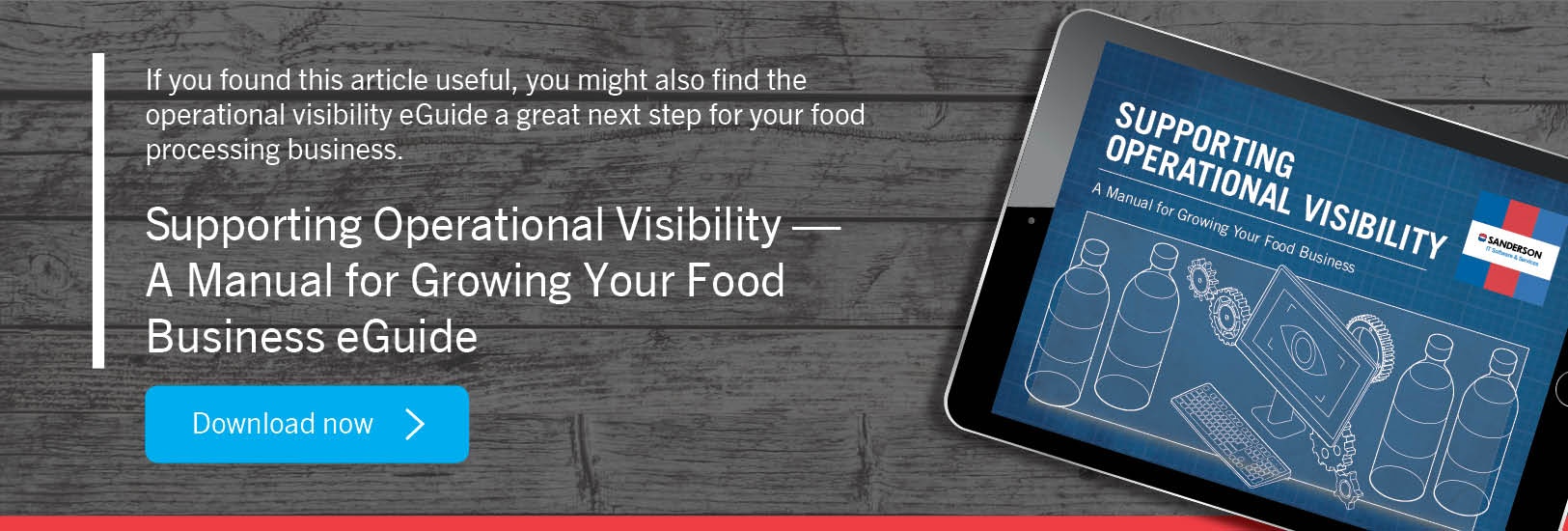Profitability through optimisation -- managing cost and material changes in food processing
Food producers that lack the agility to optimise production to cope with higher costs and changing demand risk a loss of profitability.

For food producers, the beginning of 2019 offered yet more reminders of the imperative for them to be more flexible and agile than ever before. Food processing is now no place for businesses that cannot change course at speed. Essentially, a business can only be profitable by optimising their processes -- embracing the new ever-changing environment they find themselves in.
Take January’s “Veganuary” initiative, which broke new records as the number of people going vegan for the first month of the year doubled once again – in an age of social media, consumer trends acquire scale, and velocity incredibly quickly, at the expense of food processing companies unable to catch up.
Elsewhere, one of the UK’s leading credit insurers predicted a spate of business failures across the sector during the first half of 2019, as higher costs continue to squeeze food producers’ profit margins, and the industry’s largest customers seek to move to longer payment terms.
The prospect of Brexit – particularly a no-deal exit for the UK from the European Union – also loomed large. Food producers would face “considerable turbulence” the Environment Secretary warned. That could include higher prices for both imports and exports, as trade tariffs bite, in an industry where inflation has regularly run ahead of general price increases in recent years.
The bottom line is that in an age of increasing cost pressures, heightened market uncertainty, and rapidly changing consumer tastes, food producers are having to work harder than ever to secure and enhance profitability. Indeed, those businesses unable to operate with the agility required to manage cost and material changes will find profitability slips from their grasp.
![SN-AT-Profitability-through-optimisation-[Insert-01]](https://www.sanderson.com/hs-fs/hubfs/Campaigns/FD/FD%20-%20Theme%203/SN-AT-Profitability-through-optimisation-%5BInsert-01%5D.jpg?width=777&name=SN-AT-Profitability-through-optimisation-%5BInsert-01%5D.jpg)
Achieving operational flexibility
How, then, to achieve that agility and flexibility? Well, food producers need new tools with which to optimise every area of their operations. In practice, food processing is a complex web of operations, spanning everything from new product development to production and distribution.
Optimising practises and processes at every stage of these operations is the key to managing cost and change effectively – and protecting profitability as the recipe list evolves. By prioritising questions that often present themselves, it becomes easy to identify whether current processes and systems deliver or need addressing:
![SN-AT-Recipe-Management-[Insert]](https://www.sanderson.com/hs-fs/hubfs/SN-AT-Recipe-Management-%5BInsert%5D.jpg?width=777&name=SN-AT-Recipe-Management-%5BInsert%5D.jpg)
Recipe management – do you have full and accurate oversight of your recipe database in such a way that you can control variances and wastage? Are you able to handle certification efficiently and respond to the increasing demand for sustainability and traceability? Are there clear guided instructions for each processing stage?
![SN-AT-New-product-development-[Insert]](https://www.sanderson.com/hs-fs/hubfs/SN-AT-New-product-development-%5BInsert%5D.jpg?width=777&name=SN-AT-New-product-development-%5BInsert%5D.jpg)
New product development – are you able to get your products to market quickly enough to meet changing consumer demands? Are you managing new product briefs effectively, through costings, revisions and sample requests? How are you managing the development process?
![SN-AT-Quality-control-[Insert] (1)](https://www.sanderson.com/hs-fs/hubfs/SN-AT-Quality-control-%5BInsert%5D%20(1).jpg?width=777&name=SN-AT-Quality-control-%5BInsert%5D%20(1).jpg)
Quality control – can you meet demanding quality standards efficiently? Are you able to manage quality testing and secure certificates of analysis? How are you handling issues such as quarantined stock, and managing incident workflows?

Product specification – do you have confidence in your management of specifications at each stage of production, from raw materials to the goods that you ship, including packaging and labelling? How do you manage changes to specifications? What about the growing demand for specialist products such as allergen-free foods or Halal goods?
![SN-AT-Two-way-traceability-[Insert]](https://www.sanderson.com/hs-fs/hubfs/SN-AT-Two-way-traceability-%5BInsert%5D.jpg?width=777&name=SN-AT-Two-way-traceability-%5BInsert%5D.jpg)
Two-way traceability – do you have the means to respond to both “to” and “from” enquiries at every stage of the process? Is it taking too long to manage and pass BRC, EFSIS and HACCP audits?
How food processing software can help you optimise for profit
Optimising production in order to respond to all these imperatives – and more – isn’t straightforward. It will require an automated approach that joins the dots between every department of the business, streamlining communication, and standardising processes.
Specialist food and beverage manufacturing and processing software offer a means with which to deliver that automated approach. Standard enterprise resource planning (ERP) software can work well for many businesses, but without bespoke tools and features developed specifically with the needs of food producers in mind, it won’t be possible to achieve the gains now required to optimise the business and protect profitability.
This is a sector now facing unique challenges, but with software capable of meeting challenges across technical areas, operations, sales, finance, and reporting, food producers can take control of their businesses. The greater your visibility across your business, and the more efficient it is to manage a disparate set of operations and processes, the easier you’ll find it to optimise production lines and grow profitability.
Takeaways
Every food producer must now improve agility to protect profitability.
In a period of rising costs and evolving consumer tastes, it is crucial to optimise your production lines for effective change management.
Specialist food and beverage software provides the tools you need to take control of your operations.
Topics: Food & Drink, Manufacturing




